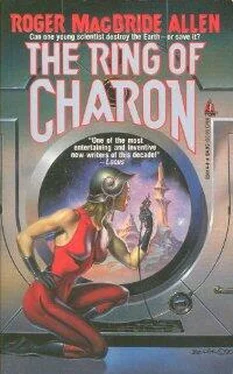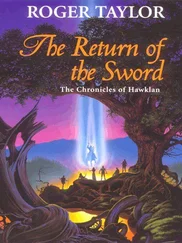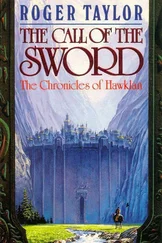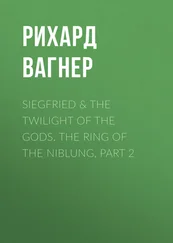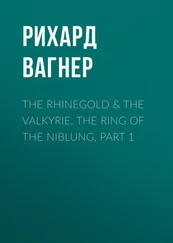Roger Allen - The Ring of Charon
Здесь есть возможность читать онлайн «Roger Allen - The Ring of Charon» весь текст электронной книги совершенно бесплатно (целиком полную версию без сокращений). В некоторых случаях можно слушать аудио, скачать через торрент в формате fb2 и присутствует краткое содержание. Год выпуска: 1990, ISBN: 1990, Издательство: Tor Books, Жанр: Фантастика и фэнтези, на английском языке. Описание произведения, (предисловие) а так же отзывы посетителей доступны на портале библиотеки ЛибКат.
- Название:The Ring of Charon
- Автор:
- Издательство:Tor Books
- Жанр:
- Год:1990
- ISBN:0-812-53014-4
- Рейтинг книги:5 / 5. Голосов: 1
-
Избранное:Добавить в избранное
- Отзывы:
-
Ваша оценка:
- 100
- 1
- 2
- 3
- 4
- 5
The Ring of Charon: краткое содержание, описание и аннотация
Предлагаем к чтению аннотацию, описание, краткое содержание или предисловие (зависит от того, что написал сам автор книги «The Ring of Charon»). Если вы не нашли необходимую информацию о книге — напишите в комментариях, мы постараемся отыскать её.
The Ring of Charon — читать онлайн бесплатно полную книгу (весь текст) целиком
Ниже представлен текст книги, разбитый по страницам. Система сохранения места последней прочитанной страницы, позволяет с удобством читать онлайн бесплатно книгу «The Ring of Charon», без необходимости каждый раз заново искать на чём Вы остановились. Поставьте закладку, и сможете в любой момент перейти на страницу, на которой закончили чтение.
Интервал:
Закладка:
“Do you mean bring the other teams out here?” Raphael asked. “Get them to the Ring of Charon to help plan our experiments?”
Larry shook his head. “No, sir, that wouldn’t help. It would leave us focused on gravity. This isn’t about gravity! Gravity is just what these… these things use, the way we use electricity. We’re up against something a thousand times more complex than running little gravity-wave experiments.
“Besides, the center of action isn’t out here. It’s in the Earth-Moon system. We need to get all the specialists from all the various outposts to the Moon, working on the spot, taking a good hard look at the Lunar Wheel. And the black hole.
“Somebody built that Wheel inside the Moon. Who? How? Why? Where are they from? We can’t know from here. We have to get inside the Wheel, if we can. Take a look at it, see if we can find out what makes it tick, what its purpose is.”
Larry stood up, and gazed, more steadily, at the eerie image of a Wheel inside the Moon.
“And find out how to destroy it,” he said in a whisper.
CHAPTER TWELVE
After the Fall
The Sphere had to be smarter than the Callers or the Anchors or the Worldeaters, or any of the other forms. The Sphere had far greater responsibilities, and thus had far more need to be cautious, than the others.
Besides, the Sphere had so much data to keep track of. Handling the gravitic control of a multistar system, keeping tabs on the many Observers and Waiters sleeping in their far-flung hiding places, building and breeding and hoping for the next generation of seedships. A thousand, a million other details. It took tremendous processing power, remarkable flexibility, and adaptability, to handle it all .
But the Sphere was not immune to shock, or protected against surprise—and many of its reflexes were as unalterable as a Caller’s. When the Caller’s messages exploded into its mind, requiring preemptive Link, the Sphere had no choice but to comply.
In the normal course of events, it was the Sphere that would signal that it was ready for a new world and then wait for a reply. It was rare that a Caller initiated Link, and there were many fail-safes to prevent it, but it had happened at times, when there was a malfunction, or a spurious signal, or when the life-bearing world in question was in some immediate danger — say, from an asteroid impact .
Once initiated, failure to complete the Link would not only threaten the destruction of the precious life-bearing world in transit, but the energy destabilization of a failed Link could actually wreck the Sphere and its star system.
A planet—or any mass—blocked midway through transit would have to express its entire mass as energy — enough uncontrolled energy to rival a supernova, funneled right into the Sphere. And if the Sphere was wrecked, so was the Sphere’s star system, as planets and stars careered out of control. No matter if there was a place prepared for the world, or sufficient energy stores were available to handle the transfer. The Sphere had to complete the Link and take on the new world—or chance its own destruction .
Now was perhaps the worst of times. Danger pressed the Sphere on all sides, and the energy expenditure of incorporating a new world could scarcely be afforded. Worse, the radiation of that much nonrandomized energy could only draw the danger closer.
But it had no choice. None whatever. At least the Caller had sent a dataset along with the new world. With a supreme effort, the Sphere set the new world into a holding pattern, shuttling it from one temporary stability point to another while the Sphere prepared a place for it.
But the danger. The danger was not merely to the Sphere’s domain, but to the Caller’s own planetary system. But there too was hope. If the Caller could build quickly, then perhaps its domain could provide a new, uncharted haven, a direction of retreat. But only if it could build fast, and with a minimum of traceable linkage .
The Caller would need help from the Sphere. The more help the Sphere sent, the better the odds of the Caller’s success. The risk and the expenditure of resources were worth the possible reward.
The Sphere rushed to prepare a Portal Anchor, capable of Linking under a Caller’s control, and arranged for new-breed Worldeaters to be transported to the new domain.
The Sphere also sent a message. An urgent report, that could be boiled down to one simple concept.
Danger.
Dianne stared out across the sky. Things seemed to have settled down, at least for the moment, though this was no sky of Earth’s. A half-dozen stars, white, yellow-white and red, gleamed brighter than Sirius ever had. A monstrous sullen red disk, the size of the Moon, glowered behind one of the stars. But the star was too far off to show a disk. How large did that disk have to be to seem that big behind a star? Was it a red giant? Dianne remembered reading about such things—huge stars, their outer atmospheres thin, barely more than a red-hot vacuum, with diameters as wide as Saturn’s orbit. But a red giant should appear to grow dimmer at its edges. This star showed a firm, sharp edge.
A new star—Dianne felt certain it was not the Sun—hung fat and bright, bathing the Earth in light that was not quite the color of sunlight. The terminator was in about the right place.
Something caught at Dianne. A strange star where the Sun should be. A wave of irrational anger swept over her. The Sun that had nurtured Earth for four billion years was gone. In its place this substitute shone in Earth’s sky. No counterfeit deserved the true Sun’s name. She decided to call it the Sunstar to distinguish it both from Earth’s proper Sun and the other nearby stars.
Her eyes swept further across the sky, were drawn again to Earth. If the Sunstar’s light was not precisely correct, neither was the darkness over the Earth quite so dark as it should have been—not with a half-dozen stars and that massive disk shedding light upon it.
Opposite the Sunstar in the sky, about where the Moon should have been, a roughly toroidal structure of indeterminate size hung in the darkness at some unknown distance. It was a bit larger than a ring for a fat man’s finger held at arm’s length. It sat in space, gleaming in the light of the Sunstar. Acting on impulse, she fired a radar-ranging beam at it, and got a response 2.5 seconds later. The ranging computer wasn’t really meant to work at that sort of range, but it returned a calculated distance of about 300,000 kilometers. The toroid was roughly at the Moon’s distance from Earth. Sweet God in the sky. That made it roughly as large as the Moon.
Somehow, of all the terrible wonders she saw, it was the least of them, the toroid, that scared her most. New stars, a substitute sun, even that massive, far-off, glowing red thing in the sky she could accept. It was at least possible , albeit highly improbable, that they were natural, understandable objects. But the toroid was obviously—and impossibly—artificial. A made thing, built by someone, a wheel in the sky as big around as Earth’s Moon.
Enough of stargazing. If Dianne wanted to survive, she had work to do. She strapped herself more firmly into her command chair and started running checks.
Wait a second. NaPurHab. Where the hell was—there. There it was. Already nothing more than a tiny shape, moving down toward the Earth before sweeping back out onto the Lunar half of its figure-eight orbit. Much good that it did her. She certainly couldn’t reach NaPurHab, and with the Moon missing, the Purps’ orbit was going to get plenty screwed up. It might well not be a good place to be.
Читать дальшеИнтервал:
Закладка:
Похожие книги на «The Ring of Charon»
Представляем Вашему вниманию похожие книги на «The Ring of Charon» списком для выбора. Мы отобрали схожую по названию и смыслу литературу в надежде предоставить читателям больше вариантов отыскать новые, интересные, ещё непрочитанные произведения.
Обсуждение, отзывы о книге «The Ring of Charon» и просто собственные мнения читателей. Оставьте ваши комментарии, напишите, что Вы думаете о произведении, его смысле или главных героях. Укажите что конкретно понравилось, а что нет, и почему Вы так считаете.
